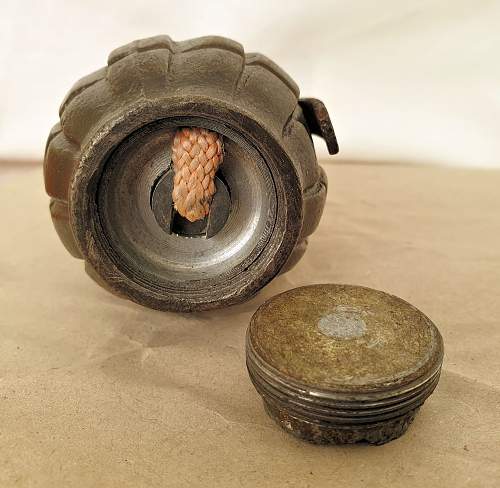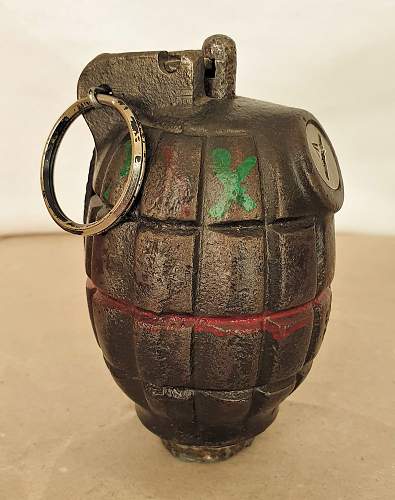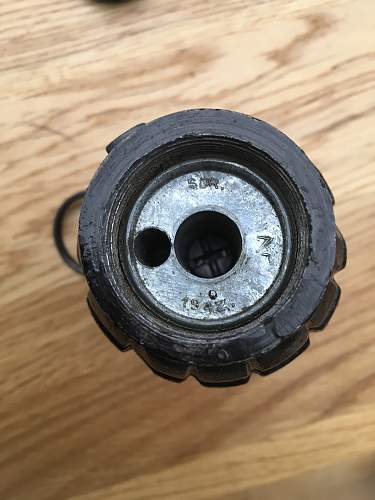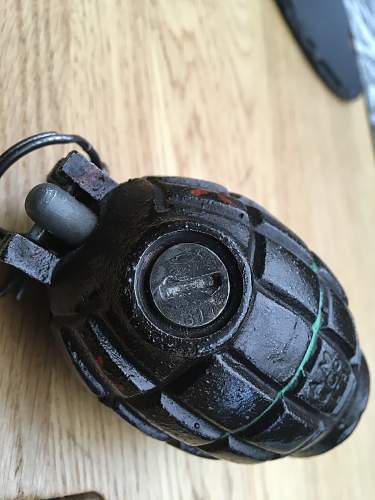Hi Guys,
I have recently obtained this Mills Bomb - but know very little about them. I have viewed a couple of websites that were recommended here on the forum, but still have some questions.
1) Is this a WW1 or WW2 version?
2) What is the significance of the Red horizontal band and the Green and Red 'X' crosses.
3) It is supposed to be inert - but how can one tell?
Any information would be very much appreciated.
Here the photo's
Thanks Neil















 .
.






Bookmarks